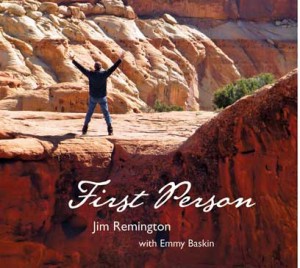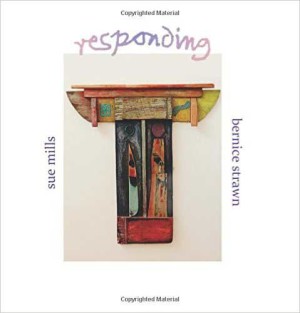by George Sibley
By the time you read this, something about the future of Central Colorado – this place where the waters of the West start – will be at least written down. I’m writing this a day after I sent off my part of a Gunnison Basin Water Plan out to 2050: an “appendix” compiling a couple years of off-and-on pushes to get public input on the future of the state’s water supply. Over in the Arkansas River and Rio Grande Basins – the other basins for which Central Colorado is the headwaters – people have been engaged in finishing up the same kind of thing.
These three water plans will, by the time you read this, have joined five others in Denver, in the cubicles of the staff of the Colorado Water Conservation Board (CWCB), where they will be assembled over the next few months into a final draft of the Colorado Water Plan. This draft is a pretty massive effort to map out how the people of the state might accommodate a lot of new people by mid-century in an environment of already stressed water supplies – water supplies that will probably have diminished somewhat significantly by mid-century.
Despite numerous tensions, both within our river basin and between the basins, I personally have found this to be a surprisingly affirmative process. I think it is the first time in my life that I have felt myself to be part of an actively democratic venture. The planning process was instigated by what might be called a “city-state” problem: the fact that nearly 80 percent of Colorado’s population – and roughly 80 percent of the state’s projected growth by 2050 – lives or will live in the metropolitan Front Range, Fort Collins to Pueblo. The big metropolitan water providers realized there would be a big gap between the needs of the projected mid-century metro population and the amount of water they knew they could provide under the state’s existing distribution and management of water resources.
But rather than treating this as a metropolitan problem for which the rest of the state would provide the solution, Gov. Hickenlooper chose to consult the non-metropolitan parts of the state. These areas include the eastern High Plains, the Rio Grande llanos and the Colorado River tributaries on the Western Slope. These areas will have the opportunity to first examine their own intra-basin situations, problems and opportunities out to mid-century, and then draft up basin-level water plans. The nine Basin Roundtables*, set up in 2005 under Russell George’s tenure at the Department of Natural Resources, were to prepare those basin plans – having already spent eight years studying their own water supply and demand issues.
Last summer, eight Basin Water Plans were submitted to the CWCB (with the Metro and South Platte Roundtables submitting a joint plan); the CWCB staff spent several months assembling a statewide Colorado Water Plan that attempted to address the statewide metropolitan problem of needing substantially more water by mid-century with no internal water resources of its own, but doing so within the context of the needs and concerns expressed in the non-metro basin plans.
[InContentAdTwo]
That Colorado Water Plan was finished late in 2014 – and was then sent back to the basins for critique and for the opportunity to revise their intrabasin plans to reflect the state plan. That by no means meant revising them to accommodate the state plan; some things drafted into the state plan caused some basin roundtables to beef up their concerns about proposed solutions for the statewide metro-area problem.
This re-drafting of the Basin Water Plans is what has just been completed in all the basins. Those plans now go back to the CWCB staff to re-draft the state plan – due to be completed and presented to the governor (with recommendations for the 2016 General Assembly) in December. It has thus been something of a dialogue between the basins and the state, and across the two great divides of Colorado: the Continental Divide and the urban-rural cultural divide. Every basin held numerous public meetings (attended by the usual one percent of citizens who care enough). Literally no one in the state can say they were not invited to say what they think about our water future.
There are problems with that, of course. With a couple exceptions, all of the draft basin plans exceeded 300 pages; the draft state plan is 350 pages; so no one can expect citizens with lives of their own to read through all that. We dealt with that in Gunnison Basin by putting out a summary of our plan, and a guide to how the state and basin plans addressed the “big questions.”
The biggest question is where the water will come from for the three to five million new people projected for Colorado by mid-century. There are three possible sources for that:
Municipal and Industrial Conservation – in all its forms: Education for individual conservation of water is part of this. But probably more important are systemic and institutional efforts to reduce water demand. Mandatory low-use fixtures and appliances, land-use regulations to reduce water-intensive outdoor landscaping in new developments, reuse of “gray water” or re-treated sewer water for outdoor needs, and other upfront measures that don’t allow excessive use to even begin. If the metropolitan region were to embrace all of the ideas put forward for “high conservation,” there might not be any unmet gap by mid-century.
“New Supply” (Transmountain Diversion from the Western Slope): This is the biggest sticking point in the planning process to date. The big metropolitan water suppliers have said they cannot realistically meet the mid-century needs without another transmountain diversion (TMD). The Colorado River tributary basins say there is no more water to divert out of the basin, due to downstream obligations and the alarming loss of storage in the Colorado Basin’s big reservoirs through the current drought cycle. (This may actually not be a “drought” but the “new normal” under climate change projections.) Rather than playing the “Not One Drop” bluff, the Western Slope basins have laid out some conditions under which a new TMD could happen. Basically, water would be available only in years of above- average runoff, after West Slope reservoirs have filled to a certain extent, with the diverter accepting full hydrologic responsibility, and with mitigation to the West Slope for its lost opportunities. The Front Range utilities and the state plan have actually accepted most of those conditions, and will study whether it would be worth their while to do a project under such conditions.
Transfers from Agricultural Use: This means taking water from food production to water for new urban growth. Newspapers call this “buy and dry” – suggesting that thuggish people are going out and “making farmers an offer they can’t refuse” – but it sounds worse than it might actually be. Agriculture accounts for 85-90 percent of Colorado’s consumptive use of water. Doubling the amount of water going to the cities would diminish agricultural use overall by about 20 percent – the amount that the state’s urban users are already being asked to cut from their use.
Ag users do face some unique problems in any effort to free up water for other uses. These problems include interwoven water rights, where one farmer’s return flows are another farmer’s water supply; legal problems of expensive and time-consuming use changes; and replacement of lost income from fallowing, deficit irrigation or other methods for freeing up water without terminally drying up the land.
Nonetheless, those problems will have to be successfully addressed if additional municipal and industrial water (beyond what can be saved through conservation) is needed, because, quite simply, agriculture is where the water is – even if it has to be bought from the Western Slope and moved through a tunnel.
This suggests a need for research and study that the Colorado Water Plan acknowledges. It is an “adaptive management” plan, based on five possible future scenarios featuring different degrees of both population growth and climate change. The first decade of the plan (to around 2025-2030) will involve “low regret” actions that make sense no matter what the future brings, while the farmers and ranchers work with the urban utilities on ways to free up some water (not for free), the environmental scientists work on ways to improve water quality and quantity in the streams and rivers, and all of us raise our individual and collective awareness of how the economy and ecology are shaking out, and accustom ourselves to accepting whatever complex and expensive conservation measures may be needed down the road.
Access to all basin plans and the Colorado Water Plan can be found at coloradowaterplan.com (click on “Resources”). A “Guide to Key Points” of the state plan can be found through the website of the Water Center at Colorado Mesa University – www.coloradomesa.edu/watercenter/GunniBasinPlan.html.
Given the more usual approach of top-down technocratic actions in water development, I think Coloradans should be proud of what is, as much as it can be, a comprehensive and inclusive grassroots approach to facing a probably difficult future. Now – nothing to do but get about working through it. 2050 looms.g
* Colorado’s mountains are the headwaters for eight natural river basins: the North Platte, South Platte/Republican and Arkansas Rivers in the vast Mississippi River Basin; the Rio Grande flowing south and east to the Gulf of Mexico; and the major tributaries of the Colorado River flowing west: the Yampa and White tributaries of the Green River, the Upper Colorado, the Gunnison, and the complex of San Juan River tributaries and the Dolores River flowing off the south and west slopes of the San Juan Mountains. A ninth “metro” roundtable was added, composed of Denver and its first ring of suburbs.
None of the rivers that start in Colorado stop at the state boundaries, but flow off through 18 other states and Mexico. Colorado gets the use of about one-third of the water that originates in the state; the rest must leave the state under rules established by a raft of interstate water compacts.
George Sibley watches water sublimate in Gunnison.


